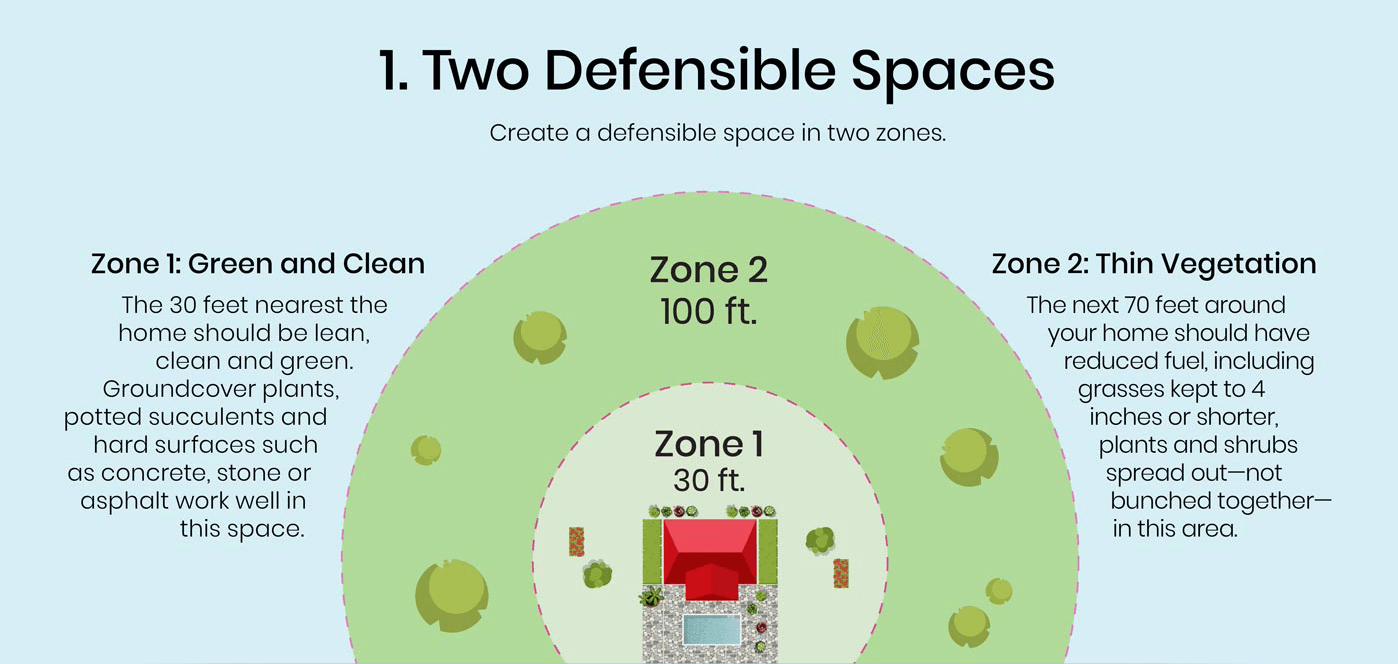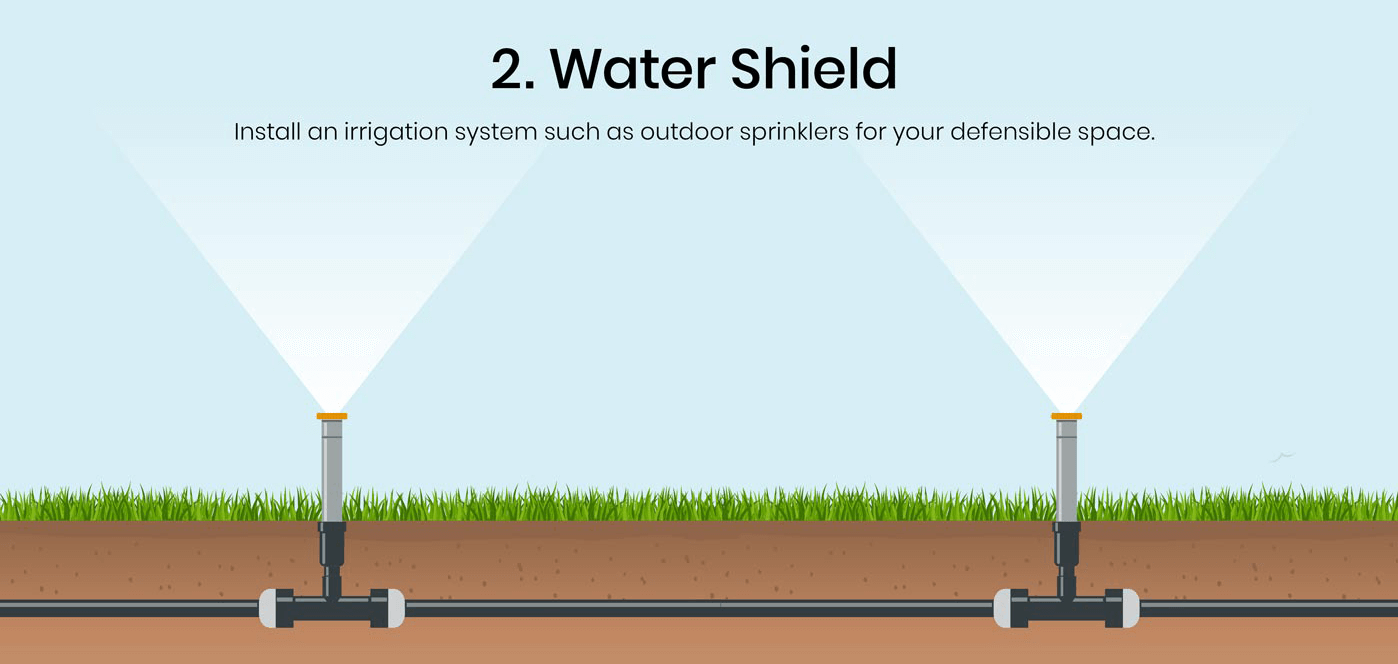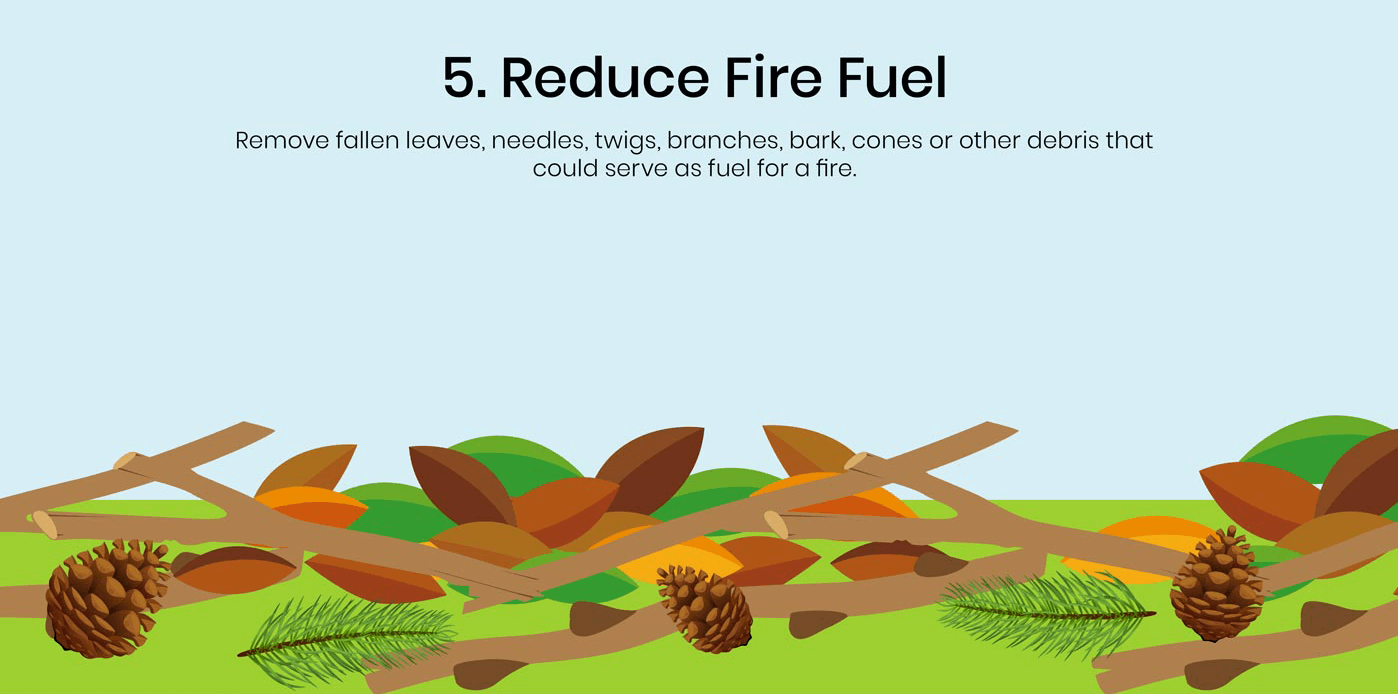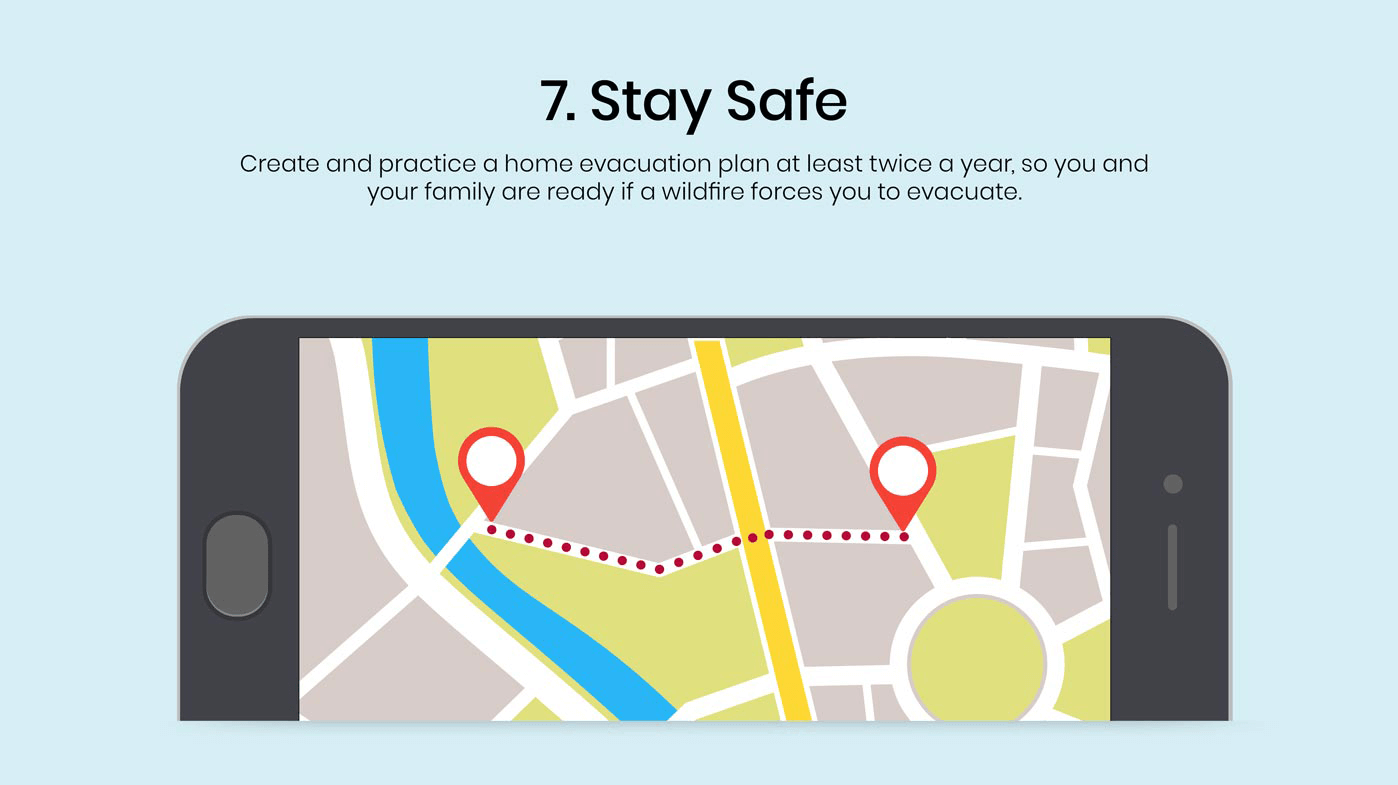Wildfires are becoming more destructive and less predictable. Fire season is no longer limited to the summer and fall months, as exemplified by the devastating Los Angeles wildfires of January 2025. As a homeowner, planning ahead gives your home and family the best chance of staying safe when disaster strikes.
This guide will walk you through how to protect your home and vehicle, create a wildfire safety plan, and ensure you have the right insurance coverage. For additional wildfire resources, visit the Mercury Insurance Catastrophe Center.
Understanding Wildfire Risk and Why Preparation Matters
Wildfires have always been a natural part of many ecosystems, helping to clear out dead vegetation and promote new growth. Wildfires can start from natural causes like lightning strikes, but human activities—e.g., unattended campfires, discarded cigarettes, or power line sparks—are more common. Once ignited, they spread rapidly due to dry vegetation, strong winds, and high temperatures. Embers can travel miles ahead of the main fire, starting new blazes and making it even harder for firefighters to contain it.
But in recent years, they’ve become more frequent and intense, especially in high-risk areas like California. Take the devastating Los Angeles wildfires that happened in January 2025, a rare month for large infernos. Fueled by dry conditions and powerful winds, these ferocious fires claimed at least 29 lives, displaced tens of thousands of people, and engulfed over 23,000 acres of land. This devastation highlights the growing unpredictability of wildfire season, with fires now igniting outside of the traditional summer and fall months.
That’s why wildfire preparedness matters more than ever. Understanding the risks and taking proactive steps, like creating defensible space around your home, preparing an evacuation plan, and having adequate insurance coverage, can make a lifesaving difference.
Be Wildfire Ready with Mercury Insurance
Wildfires can strike at any time. Protect your home and loved ones with expert tips, insurance guidance, and emergency planning resources.

How to Protect Your Home from Wildfires: Home Fire Prevention Tips
Creating a wildfire-prepared home starts with understanding key fire prevention strategies. Below is a wildfire preparedness checklist that includes essential steps to protect your property and ensure your family’s safety.
Create Two Defensible Spaces

One of the most effective ways to safeguard your home is by creating a defensible space, which is a buffer between your house and surrounding vegetation. Experts recommend creating two zones of protection around your home:
- Zone 1 (0-30 feet from your home): Remove all dead plants, dry leaves, and flammable materials. Trim overhanging branches and keep grass short.
- Zone 2 (30-100 feet from your home): Space out trees, remove excess vegetation, and create a firebreak with non-combustible materials like gravel or stone.
Install a Water Shield

A water shield system can act as a last line of defense during a wildfire. Installing rooftop sprinklers can help keep your home’s exterior damp, making it harder for embers to ignite. Another great option is fire-resistant gels or foams, which create a temporary barrier against flames. These solutions won’t stop a wildfire entirely, but they can buy valuable time and reduce the chances of your home catching fire.
Space Your Plants

Landscaping plays a key role in wildfire protection. When planting trees and shrubs, space them at least 10-15 feet apart to prevent flames from spreading rapidly. Choose fire-resistant plants like succulents or deciduous trees, which retain moisture better than dry, resinous vegetation.
Trim Trees Around Your House

Overgrown trees can give wildfire an easy path straight to your home. To lower the risk, trim branches so they’re at least 10 feet away from your roof and chimney, and clear out any low-hanging limbs that could catch fire. Regular pruning makes it harder for embers to find fuel and gives your home a better chance of staying safe.
Reduce Fire Fuel

Fires need fuel to spread, and excess vegetation, wood piles, and even outdoor furniture can become ignition points. Store firewood at least 30 feet away from your home, keep decks clear of flammable debris, and use ember-resistant fencing materials where possible.
Have an Emergency Water Supply

Ensure you have a reliable emergency water supply that meets fire department standards, such as a fire hydrant, a shared storage tank with neighbors, or a pool or pond with at least 2,500 gallons of water. Clearly label all water sources so firefighters and first responders can easily locate and access them in an emergency.
Create and Practice a Home Evacuation Plan

Every household should have a wildfire evacuation plan in place. Make sure everyone in your family knows:
- Multiple escape routes from your home and neighborhood.
- Where to meet if separated.
- How to contact emergency services and stay informed about wildfire alerts.
Also, pack a go-bag with essential items like important documents, medications, first aid supplies, extra clothing, and pet necessities. Practice evacuation drills regularly so that your family knows what to do if a fire threatens your area.
Keep an Up-to-Date Home Inventory

If a wildfire damages your home, having a current home inventory will make the insurance claims process much easier. Document your belongings with photos or videos, including high-value items like electronics, furniture, and appliances. Store this inventory in a cloud-based system or fireproof safe to ensure it remains accessible.
Homeowners Insurance Considerations for Wildfires
Living in a wildfire-prone area also means making sure your fire protection plan includes the right homeowners insurance. This coverage can be a lifesaver if a wildfire hits, but not all policies offer enough protection. It’s important to review your policy to ensure it covers wildfire damage and includes replacement cost coverage rather than just actual cash value, which may not be enough to rebuild your home after a fire.
Also, your insurer may offer discounts on your premium if you’ve made fire-resistant upgrades—like installing Class A roofing, ember-resistant vents, and tempered glass windows. This is an easy way to help keep your home protected while saving money on insurance.
Conclusion
When a wildfire strikes, every second counts. That’s why preparing ahead of time is so important. Taking steps like creating defensible space, installing fire-resistant upgrades, and having an evacuation plan gives you a much better chance of keeping your home and family out of harm’s way.
Now is the time to take action. Review your insurance, make necessary upgrades, and ensure you have the right coverage in place. Mercury offers affordable, cheap homeowners insurance with wildfire protection, so you can have peace of mind when it matters most.
For more fire safety and prevention tips, check out our fire resources page!


